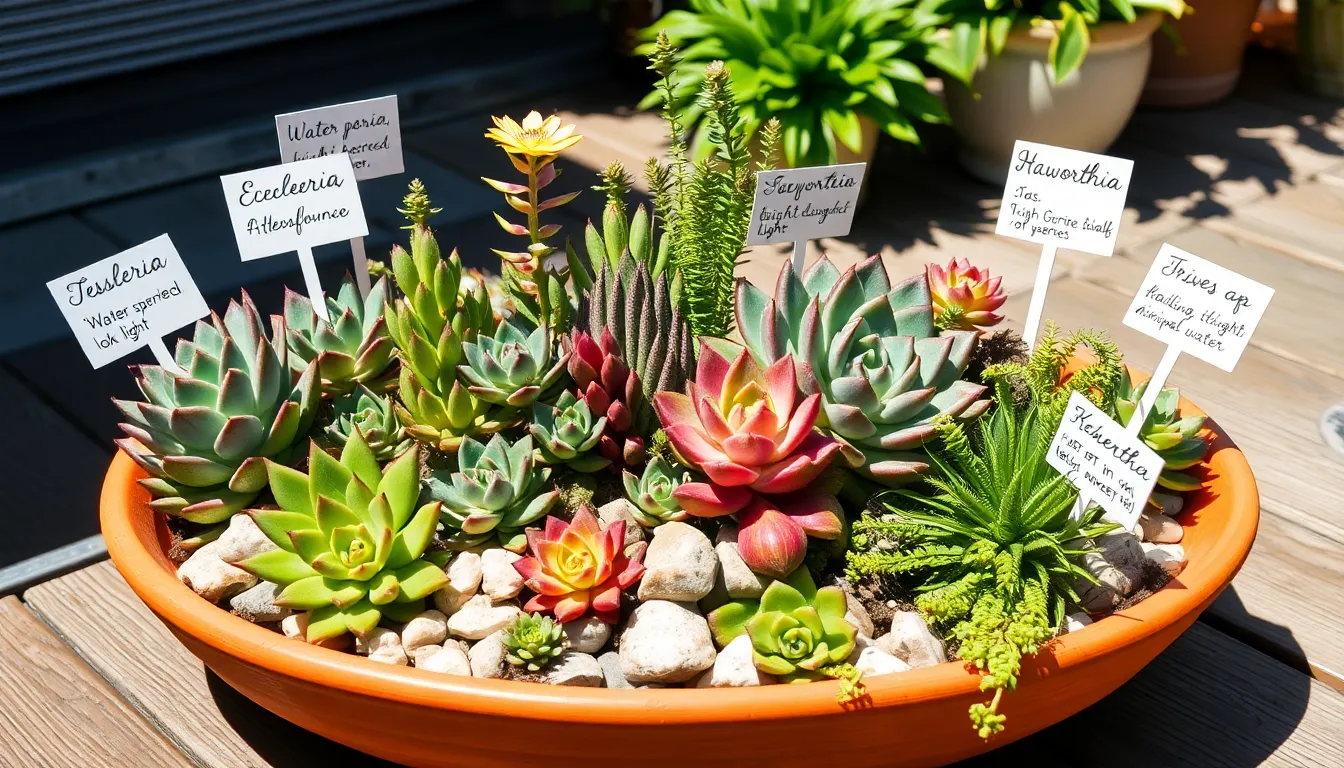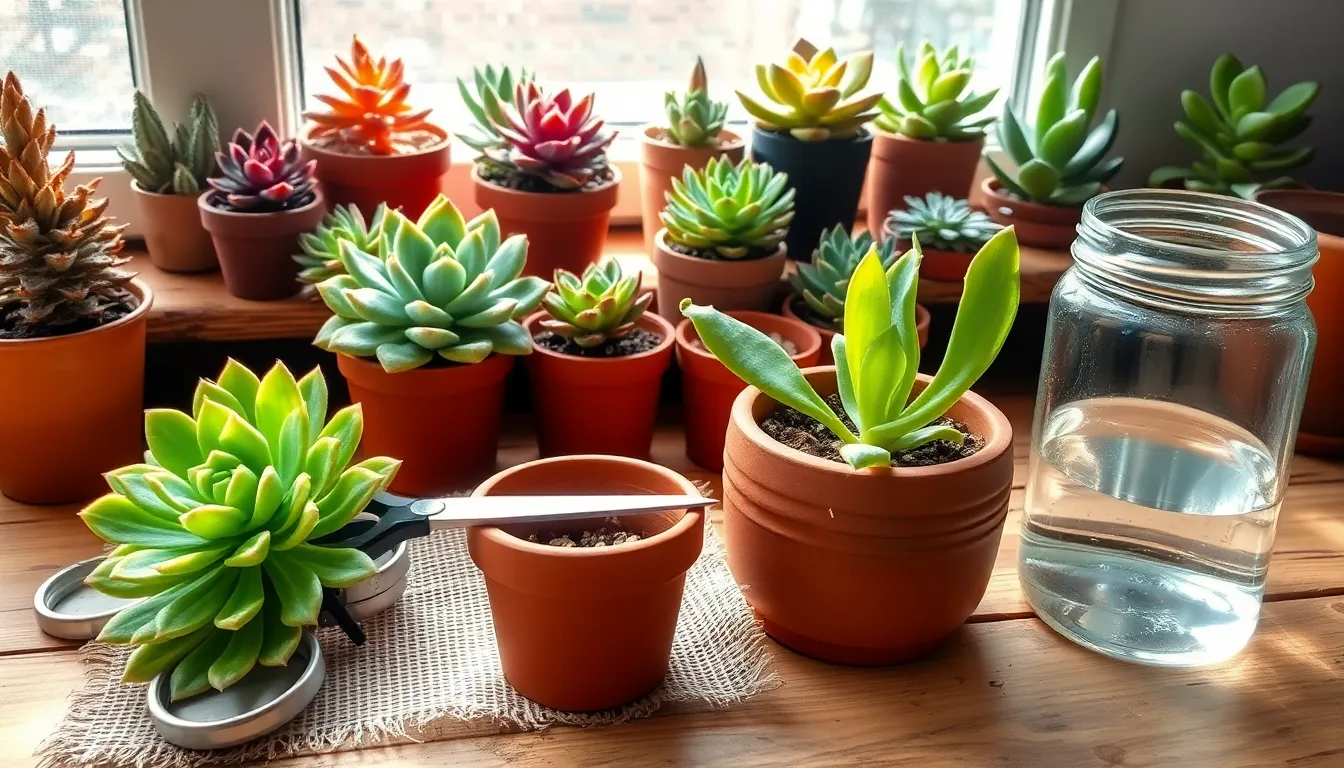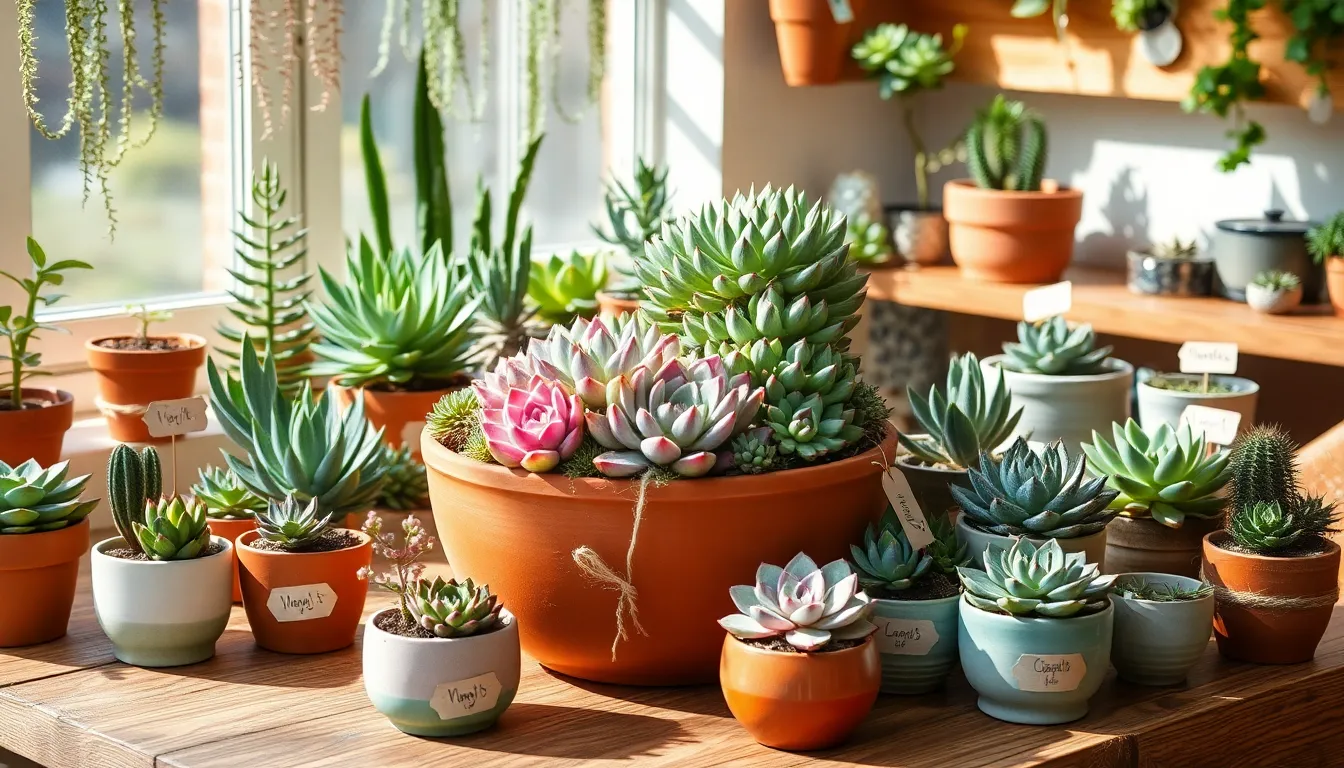Welcome to the vibrant world of succulents, where even the smallest windowsill can become a lush oasis of green! Whether you’re dipping your toes into gardening for the first time or you’re a seasoned green thumb looking to expand your plant family, succulents offer a rewarding experience with their resilience and stunning variety. Their easy-going nature makes them perfect companions for gardeners of all levels, promising not just survival, but thriving beauty with minimal fuss.
This guide, “10 Best Succulents for Beginners,” is your gateway to discovering some of the most forgiving yet fascinating plants you can grow. By focusing on these ten hardy varieties, you’ll unlock the secrets to successful gardening with step-by-step insights that ensure your plants not only survive but flourish. Imagine the satisfaction of seeing your succulents grow and thrive, bringing a touch of nature’s beauty to your home with confidence and ease.
Aloe Vera (Aloe barbadensis miller)
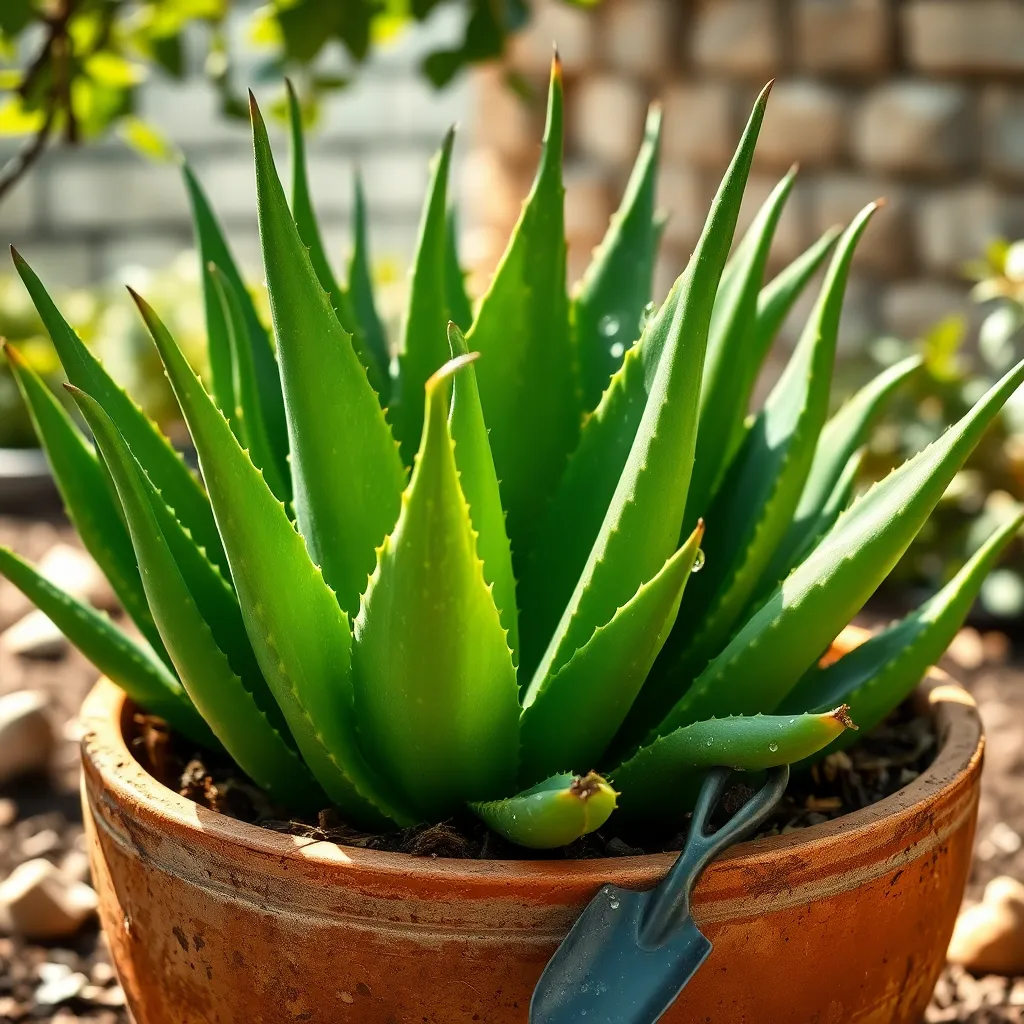
Aloe Vera is a popular succulent known for its medicinal properties and ease of care, making it perfect for beginners. This plant thrives in bright, indirect sunlight and can even tolerate some direct sun once acclimated.
To ensure healthy growth, plant Aloe Vera in a well-draining cactus or succulent soil mix. Adding perlite or coarse sand can further improve drainage, preventing root rot, which is a common issue with succulents.
Watering Aloe Vera correctly is crucial; allow the soil to dry out completely between waterings. During the winter months, reduce watering frequency as the plant’s growth slows down, ensuring it remains healthy through the colder season.
For those looking to expand their succulent collection, Aloe Vera is easy to propagate from offsets, also known as “pups,” that grow at the base of the plant. Simply remove the pups with a clean, sharp knife, allow them to callous over for a day or two, and then plant them in their own pots.
Panda Plant (Kalanchoe tomentosa)
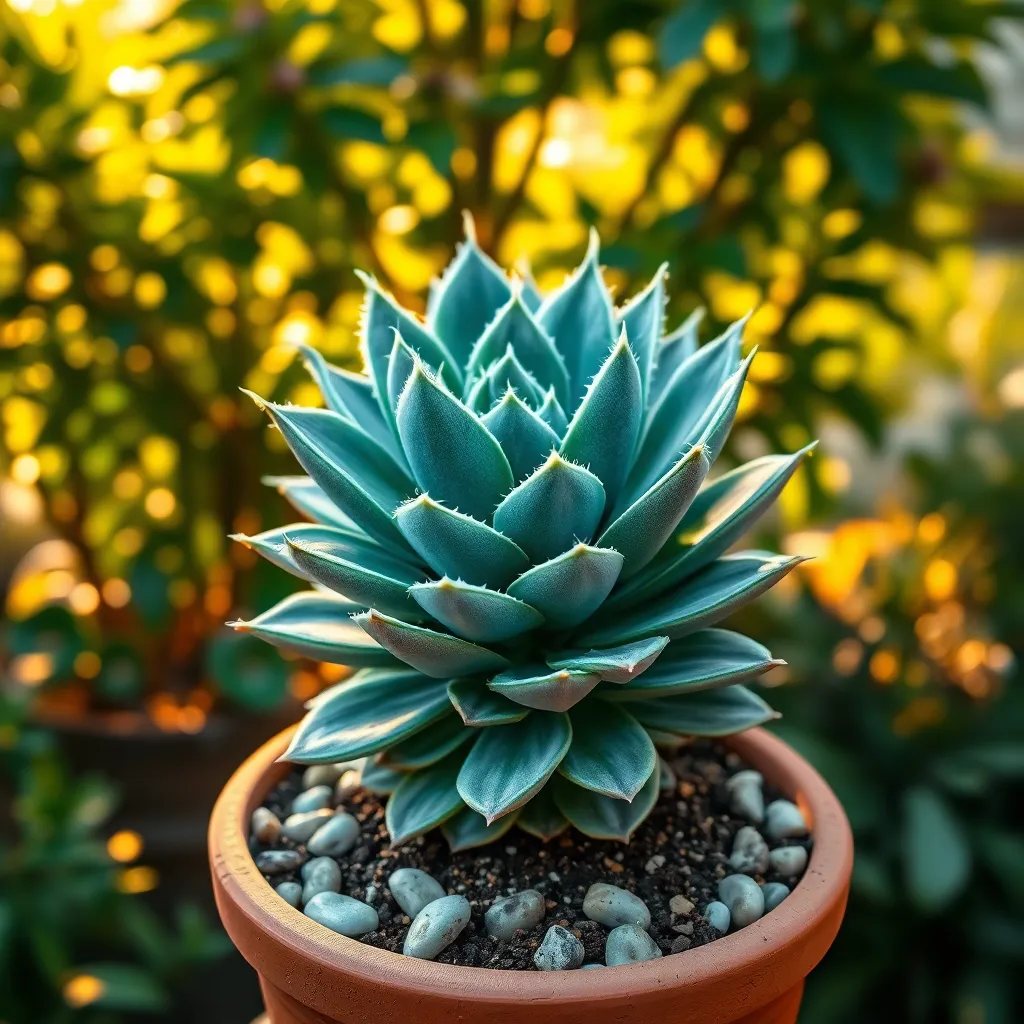
The Panda Plant (Kalanchoe tomentosa) is a charming succulent perfect for beginners due to its ease of care and unique appearance. Known for its fuzzy, silvery leaves with brown edges, this plant adds a touch of whimsy to any indoor garden setup.
To ensure your Panda Plant thrives, place it in a spot where it will receive bright, indirect light. Direct sunlight can scorch its leaves, so consider positioning it near a north or east-facing window.
Watering is straightforward: allow the soil to dry out completely between waterings to prevent root rot. During the growing season, typically spring and summer, you might water every two to three weeks, but reduce frequency in the fall and winter.
When it comes to soil, choose a well-draining mix, such as a cactus or succulent blend, to support healthy root development. For advanced care, consider adding perlite or pumice to the soil for improved aeration.
String of Pearls (Senecio rowleyanus)
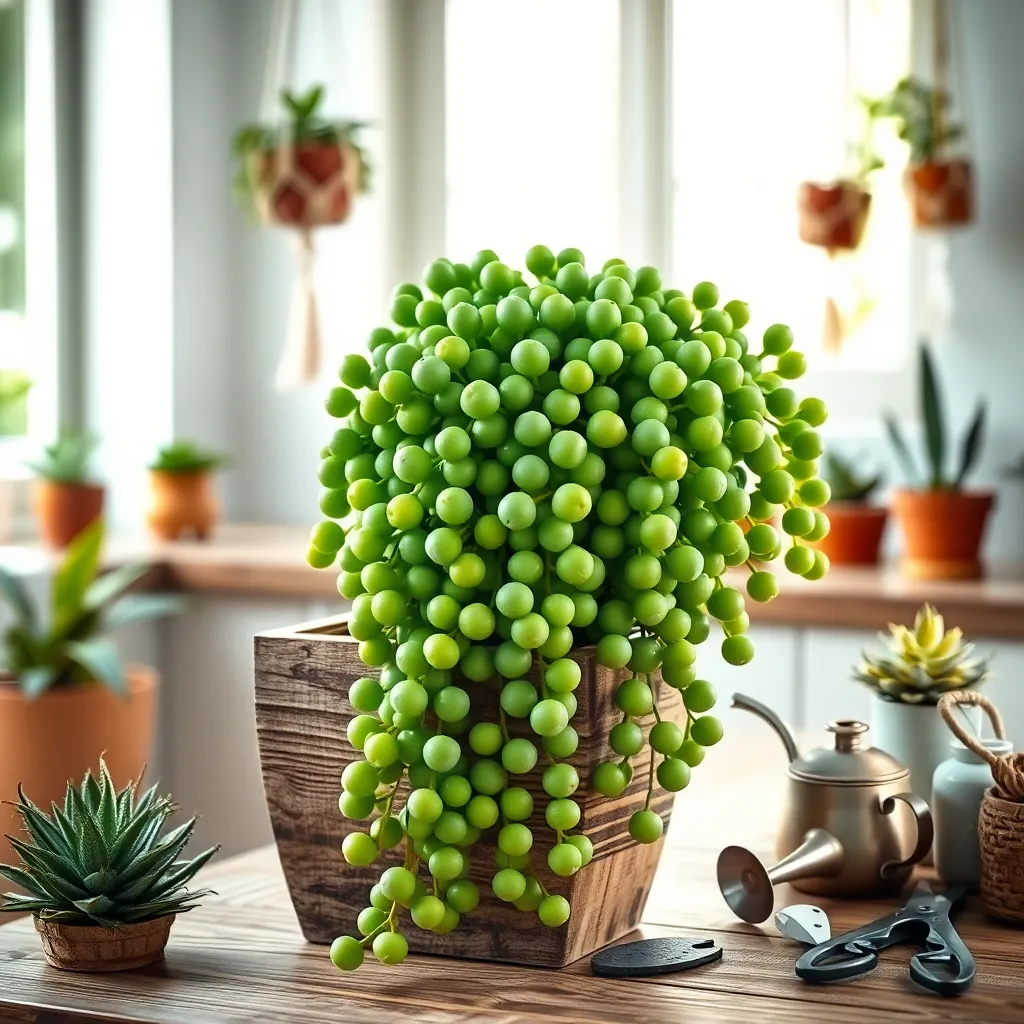
To add a touch of elegance to your indoor garden, consider the String of Pearls (Senecio rowleyanus). This unique succulent is known for its cascading strands of pea-like leaves, making it a striking addition to hanging baskets or shelves.
When it comes to care, this plant thrives in bright, indirect light, mimicking its native habitat in the dry regions of Southwest Africa. For best results, place it near a south-facing window, but ensure it is protected from direct, harsh sunlight, which can scorch its delicate leaves.
A crucial aspect of growing String of Pearls is maintaining a careful watering schedule. Allow the soil to dry out completely between waterings, as overwatering can lead to root rot—a common pitfall for beginners.
Use a well-draining cactus or succulent soil mix to prevent water retention, and consider adding extra perlite or pumice for improved drainage. Fertilize sparingly, providing a diluted, balanced liquid fertilizer once a month during the growing season to encourage healthy growth.
Burro’s Tail (Sedum morganianum)

Burro’s Tail (Sedum morganianum) is a delightful succulent known for its trailing, fleshy stems that resemble a donkey’s tail. This plant is ideal for hanging baskets where its cascading stems can grow up to 24 inches long, adding a unique texture to any indoor garden.
To ensure your Burro’s Tail thrives, place it in a spot with bright, indirect sunlight. While it can tolerate some direct sun, too much exposure can cause leaf scorching, so it’s best to provide a little afternoon shade if direct sunlight is unavoidable.
Well-draining soil is crucial for Burro’s Tail, as it helps prevent root rot—a common issue for succulents. A cactus or succulent mix is preferable, and you can enhance drainage by adding perlite or pumice to your soil blend.
When it comes to watering, allow the soil to dry out completely between waterings to mimic the plant’s natural arid environment. During the growing season, water every two to three weeks, reducing frequency in the winter months when the plant’s growth slows down.
Ghost Plant (Graptopetalum paraguayense)
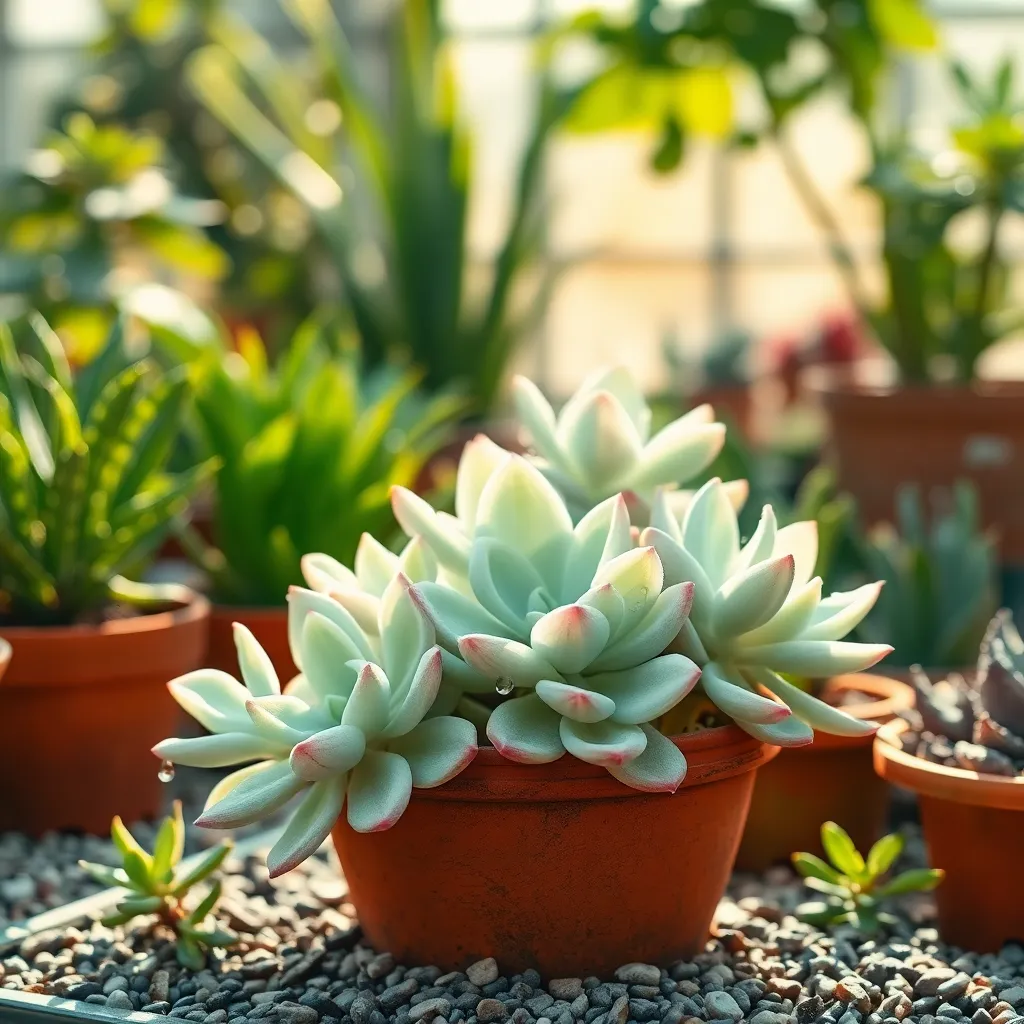
The Ghost Plant, also known as Graptopetalum paraguayense, is a succulent that thrives in a wide range of environments, making it perfect for beginners. Its mesmerizing, pale blue-gray leaves add a touch of elegance to any indoor or outdoor garden.
For optimal growth, place your Ghost Plant in a location where it will receive bright, indirect sunlight for at least six hours a day. If growing indoors, a spot near a south or east-facing window is ideal to ensure it gets enough light.
Watering is crucial for maintaining the health of your Ghost Plant. Allow the soil to dry out completely between waterings, typically every two to three weeks, depending on the humidity and temperature of the environment.
Using a well-draining soil mix, such as a cactus or succulent blend, is essential to prevent root rot. It is also beneficial to add a layer of gravel or small stones at the bottom of the pot to enhance drainage.
Advanced gardeners can propagate Ghost Plants by gently removing a leaf from the main plant and allowing it to callous over for a few days. Once calloused, place the leaf on top of moist soil, and soon you’ll notice tiny roots emerging, signaling the start of a new plant.
Zebra Cactus (Haworthiopsis attenuata)

The Zebra Cactus, also known as Haworthiopsis attenuata, is a striking choice for beginners due to its distinctive white-striped appearance. This succulent is incredibly resilient, making it an excellent option for those new to plant care.
Place your Zebra Cactus in a bright, indirect light to mimic its natural habitat. While it can tolerate some direct sunlight, too much can cause the leaves to scorch, so it’s best to avoid prolonged exposure.
When it comes to watering, allow the soil to dry out completely between waterings to prevent root rot. During the summer months, this might mean watering every two to three weeks, whereas in winter, once a month might suffice.
For optimal growth, use a well-draining cactus or succulent soil mix, which prevents water from pooling around the roots. If you want to enhance drainage further, consider adding perlite or coarse sand to your soil mix.
Christmas Cactus (Schlumbergera bridgesii)
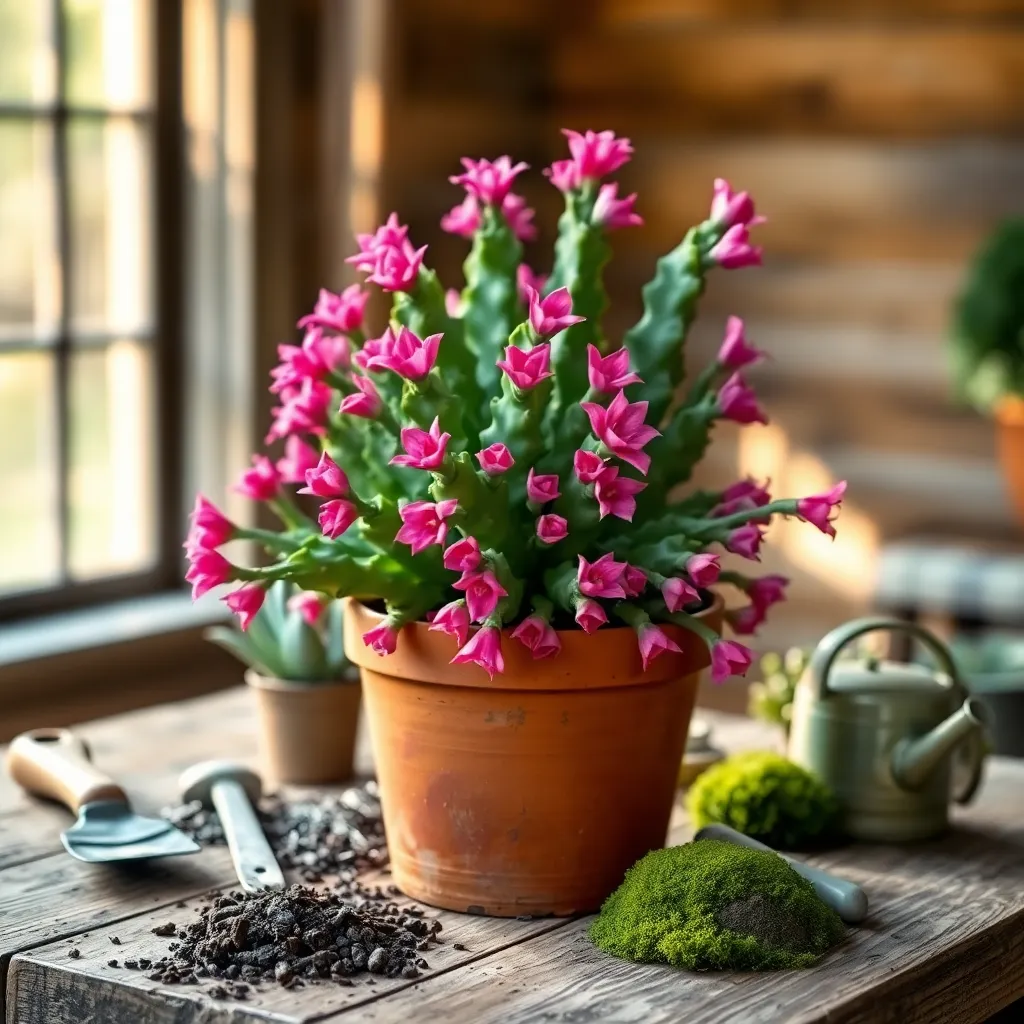
The Christmas Cactus (Schlumbergera bridgesii) is a popular choice among succulent enthusiasts due to its vibrant blooms and ease of care. Unlike most succulents, it thrives in humid conditions, making it perfect for indoor environments where the air is often more moist.
To ensure your Christmas Cactus blooms beautifully, place it in a spot with bright, indirect light. Direct sunlight can scorch its leaves, so a north or east-facing window is ideal.
When watering, allow the top inch of soil to dry out completely before giving it a thorough soak. Overwatering can lead to root rot, so ensure your pot has proper drainage and use a well-draining soil mix, such as one designed for cacti and succulents.
For more advanced care, consider feeding your Christmas Cactus with a diluted liquid fertilizer every two weeks during the growing season from spring to early fall. This will encourage healthy growth and more abundant flowering, making your plant a stunning focal point during the holiday season.
Crown of Thorns (Euphorbia milii)

The Crown of Thorns, or Euphorbia milii, is an excellent choice for beginners due to its resilience and minimal care requirements. This succulent thrives in bright, indirect sunlight and can even tolerate direct sun for a few hours daily, making it perfect for a sunny windowsill.
To ensure healthy growth, plant your Crown of Thorns in a well-draining cactus or succulent mix, which prevents water from pooling around its roots. Water sparingly, allowing the soil to dry out completely between waterings; overwatering can lead to root rot.
If you’re seeking blooms, this plant won’t disappoint, as it can flower year-round with proper care. Fertilize with a balanced, liquid houseplant fertilizer diluted to half strength every two months during the growing season to encourage vibrant flowers.
For those looking to expand their skills, consider propagating your Crown of Thorns from cuttings. Simply cut a healthy stem, allow it to dry for a day to prevent the sap from bleeding, and plant it in a fresh potting mix to root.
Blue Chalksticks (Senecio serpens)

Blue Chalksticks (Senecio serpens) is a stunning succulent known for its powdery blue foliage that adds a striking contrast to any garden. This low-growing plant thrives in warm climates and is perfect for rock gardens, borders, or as a ground cover.
For optimal growth, plant Blue Chalksticks in well-draining soil, such as a cactus mix, to prevent root rot. Ensure the soil dries out completely between waterings, as overwatering is the most common mistake for beginners.
Position this succulent in a spot where it can receive plenty of sunlight, ideally around six hours per day. If growing indoors, place it near a sunny windowsill or consider using a grow light if natural light is limited.
While Blue Chalksticks are low-maintenance, they benefit from occasional feeding during the growing season. Use a diluted, balanced liquid fertilizer every few months to encourage robust growth and vivid coloration.
Flaming Katy (Kalanchoe blossfeldiana)
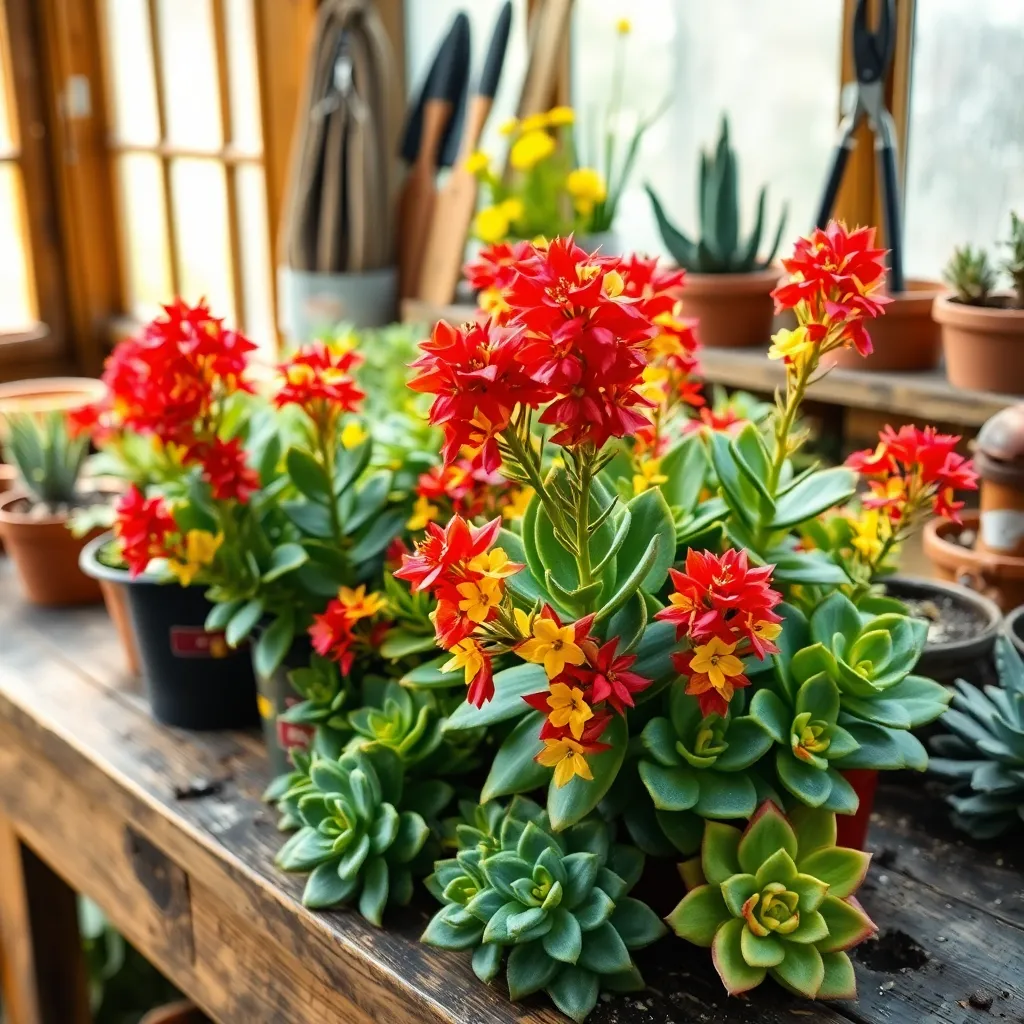
Flaming Katy, or Kalanchoe blossfeldiana, is a vibrant succulent that is perfect for beginners due to its low-maintenance nature. This plant thrives in bright, indirect sunlight, making it ideal for windowsills or well-lit rooms where it can receive plenty of light without direct exposure.
Watering Flaming Katy requires a careful touch; it’s best to let the soil dry out completely between waterings to prevent root rot. Use a well-draining soil mix, such as a cactus or succulent blend, to ensure excess water can escape easily, keeping the roots healthy.
During the growing season, which is typically spring and summer, you can feed Flaming Katy with a balanced, diluted liquid fertilizer every couple of months. Prune spent flowers to encourage new growth and maintain the plant’s compact shape, which means you’ll enjoy its stunning blooms for longer.
For those looking to expand their collection, Flaming Katy can be propagated easily from leaf or stem cuttings. Allow the cuttings to dry for a day or two to form a callus before planting them in a well-draining soil mix, and you’ll soon have new plants ready to brighten up your space.
Conclusion: Growing Success with These Plants
In our exploration of the ’10 Best Succulents for Beginners’, we’ve drawn parallels between the art of nurturing plants and the cultivation of thriving relationships. We delved into the importance of patience, adaptability, consistency, communication, and understanding—qualities that mirror selecting the right succulent for your environment. We also highlighted the significance of creating a supportive atmosphere, embracing growth, being mindful of the balance between space and closeness, and recognizing the beauty in simplicity.
As a next step, choose one relationship concept that resonated with you and consider how you can apply it to your own life today. Whether it’s practicing patience or enhancing communication, small, intentional actions can lead to profound growth.
I encourage you to bookmark this article as a handy guide for nurturing both your plant collection and your relationships. By doing so, you’ll have a reliable resource to revisit whenever you need a gentle reminder of the harmony and vitality that come from mindful nurturing. Remember, with care and attention, your relationships, much like succulents, can flourish and thrive, paving the way for lasting success and fulfillment.

